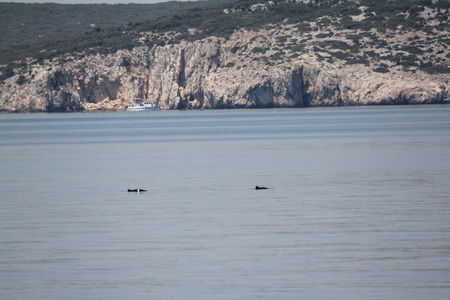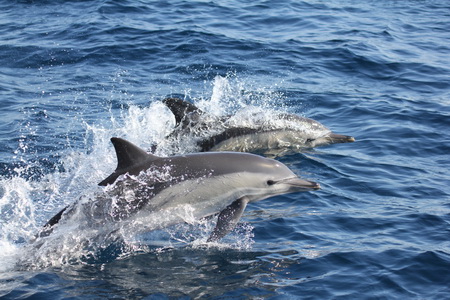I first sailed as a volunteer on board Song of the Whale in spring last year. I wouldn’t have imagined then that I would end up working full-time with the SOTW team. After joining SOTW for the passage from Iceland to Ipswich in September, I was fortunate enough to be offered a job working on the analysis of acoustic data collected during the 2012 research season. Now I am back on board SOTW and it’s great to feel the sea breeze again and the excitement of field work.

Following a crew change in Kavala, Greece, we have spent the last week surveying the coastal waters of the North Aegean Sea for porpoises. The latest additions to the team are Myrto and Eleni from Pelagos Institute and Ayaka and Arda, researchers from Istanbul University and the Turkish Marine Research Foundation. Yesterday was the last day of our dedicated harbour porpoise survey and there could have been no better way of ending it than with mirror calm seas and lots of porpoise sightings. One encounter was particularly exciting as we were close enough to identify a mother with her calf! This is a significant record, as it shows that porpoises appear to use this region to breed. This survey has lasted for 16 days with a total of 1800 km of effort in the Thracian Sea (North Aegean Sea). During this time we have looked for porpoises following a methodology that will enable us to estimate how many animals inhabit the region, and to describe their distribution. We will now have to wait for the analysis of the acoustic data that may reveal more porpoise detections within the area. Moreover, we’ve had almost daily encounters with bottlenose dolphins, seen feeding aggregations of common dolphins and bluefin tuna, saw a jumping swordfish and a loggerhead turtle and have enjoyed beautiful sunsets.
Ahead of us is another exciting survey, this time covering the whole Aegean Sea and focused on sperm whales and other cetaceans. The Aegean Sea is an area within the Mediterranean between Greece and Turkey where very different habitats can be found in close proximity going from shallow waters, to shelf edges and very deep waters over short distances. With the help of our hydrophones we hope to track and count sperm whales, study their distribution, take photos to identify individuals, and also to collect data on any other cetacean species encountered in these varied habitats.
Miriam. 27th July 2013

Sorry, comments are closed for this post.